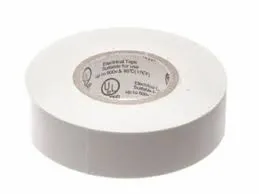Understanding Floor Warning Tape A Practical Guide
In a world filled with bustling environments, safety and efficiency have become paramount concerns. One of the essential tools in promoting safety in various settings—be it construction sites, warehouses, hospitals, or even retail spaces—is floor warning tape. This versatile product serves as a visual warning system, guiding individuals while preventing accidents and ensuring a smoothly operating workplace.
What is Floor Warning Tape?
Floor warning tape is a type of adhesive material designed to be applied to floors to indicate hazards, guide foot traffic, and demarcate specific areas within a space. Often brightly colored—commonly in shades of yellow, red, or black—this tape can carry various messages or symbols to communicate specific information effectively. The combination of colors and patterns can signal different meanings, such as caution, danger, restricted areas, or directional guidance.
The Importance of Floor Warning Tape
The significance of floor warning tape cannot be overstated. In environments like construction sites, it helps delineate hazardous zones, alerting workers to potential dangers such as open pits, machinery, or electrical hazards. In retail settings, it can guide customers to checkout lines, emergency exits, or indicate social distancing measures. Hospitals use floor warning tape to signal specific pathways for patients and staff, particularly in areas that require isolation.
Moreover, floor warning tape's ease of application and removal makes it a cost-effective solution for workplaces where needs frequently change. Unlike paint or permanent markers, the tape can be quickly laid down or taken up, providing flexibility in adapting to different workflows or safety protocols.
Types of Floor Warning Tape
There are various types of floor warning tapes available, each tailored to different applications
.1. Color-Coded Tapes As noted earlier, colors play a crucial role in conveying messages. Yellow typically suggests caution, while red often means danger or stop. Black and yellow stripes are used for general hazards, whereas green can designate safe zones.
2. Glow-in-the-Dark Tapes These are incredibly useful in low-light situations or emergencies, guiding individuals toward exits or safety areas in the dark.
floor warning tape

3. Anti-Slip Tapes Designed to prevent slips and falls, these tapes offer a textured surface while performing a similar function of marking hazardous areas.
4. Custom Printed Tapes Many suppliers offer the option to customize tapes with specific messages or symbols, allowing businesses to convey information relevant to their specific operational hazards.
Applying Floor Warning Tape
The effectiveness of floor warning tape lies not just in its presence but in its proper application. Here’s a brief guide
- Surface Preparation Ensure the floor is clean and dry before applying the tape. Dust, dirt, or moisture can prevent the adhesive from properly sticking.
- Plan the Layout Consider the flow of traffic and identify areas that require visibility. Taping should be intuitive and help streamline movement.
- Sealing the Edges For high-traffic areas, consider sealing the edges of the tape to prevent lifting, which can lead to tripping hazards.
- Regular Inspections Over time, wear and tear can compromise the visibility and adherence of the tape. Regularly inspect and replace any damaged sections.
Conclusion
Floor warning tape is an indispensable tool that enhances safety and efficiency in various environments. With its simple yet effective design, it serves as a constant reminder of hazards and pathways, ultimately contributing to a secure working or public space. As workplaces continue to evolve in response to new safety challenges, adopting tools like floor warning tape will remain vital in fostering a culture of awareness and prevention. Whether you’re managing a construction site, a retail outlet, or any facility that sees foot traffic, the importance of investing in quality floor warning tape cannot be overlooked.
-
XIANGFAN Rubber Tape-Ultimate Solutions for All Your Insulation NeedsNewsJun.24,2025
-
XIANGFAN Rubber Tape-Protection for Industrial and Residential ApplicationsNewsJun.24,2025
-
XIANGFAN Rubber Tape: Superior Safety and Sealing for Demanding EnvironmentsNewsJun.24,2025
-
XIANGFAN Rubber Tape: Reliable Solutions for Every Electrical ChallengeNewsJun.24,2025
-
XIANGFAN Electrical & Industrial Tape: Powering Reliability Across IndustriesNewsJun.24,2025
-
XIANGFAN Electrical & Industrial Tape: Excellence in Every ApplicationNewsJun.24,2025
